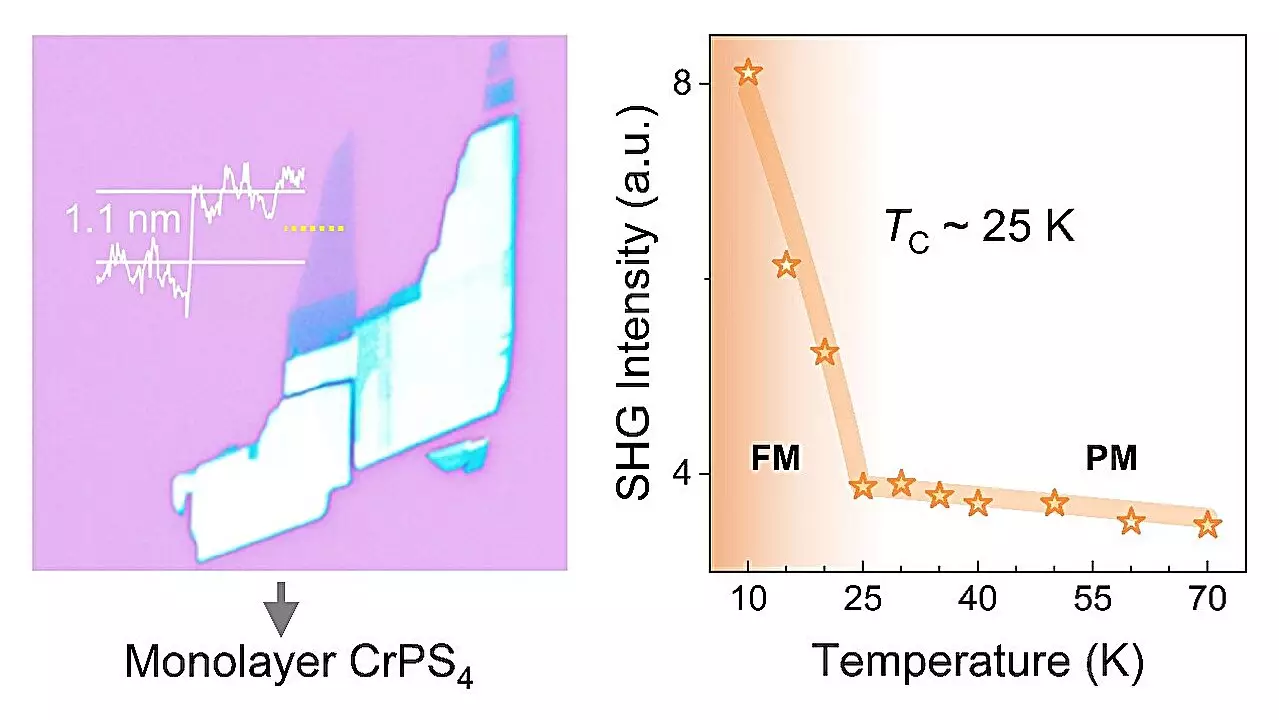Second harmonic generation (SHG) is a fascinating nonlinear optical effect that is highly sensitive to symmetry breaking within materials. SHG has traditionally been observed in crystals with broken symmetry (i type), as well as in magnetic systems (c type), albeit to a much weaker extent.
The limited strength of SHG in magnetic systems has posed challenges in utilizing this phenomenon in optical devices. While magnetic two-dimensional van der Waals materials have garnered attention for their unique properties, their nonlinear optical properties, particularly the relationship between SHG and magnetic order, remain largely unexplored.
A research team, led by Professor Sheng Zhigao at the Hefei Institutes of Physical Science of the Chinese Academy of Sciences, has made a groundbreaking discovery in the realm of SHG. By utilizing the Steady High Magnetic Field Facility, the team observed the strong nonlinear magnetic second harmonic generation induced by the ferromagnetic order in monolayer CrPS4.
In their study, Professor Sheng’s team delved deeply into the magnetic order-related SHG effects in the two-dimensional antiferromagnetic material CrPS4. Interestingly, they found that the antiferromagnetic order in bulk and even-layered CrPS4 did not produce any c type SHG effects. However, a significant c type SHG effect was observed in odd-layered CrPS4 due to the presence of monolayer ferromagnetic order.
This groundbreaking observation of ferromagnetic order-induced c type SHG effects in a 2D magnet is a significant milestone in the field of nonlinear optics. The dual breaking of spatial and time inversion symmetries in monolayer CrPS4 under the electric-dipole approximation has paved the way for a deeper understanding of the link between magnetic order and SHG.
Furthermore, the research team discovered that the ferromagnetic order induced c type SHG in monolayer CrPS4 exhibited a signal strength comparable to that of i type SHG, which arises from the breaking of crystal structural symmetry. This unique characteristic sets monolayer CrPS4 apart from other known magnetic materials and highlights its potential for use in optoelectronic applications.
The groundbreaking discovery of strong nonlinear magnetic second harmonic generation in monolayer CrPS4 opens up new possibilities for harnessing the unique properties of two-dimensional magnetic materials in the field of nonlinear optics. Professor Sheng Zhigao’s research represents a significant advancement in our understanding of the relationship between magnetic order and nonlinear optical phenomena.


Leave a Reply